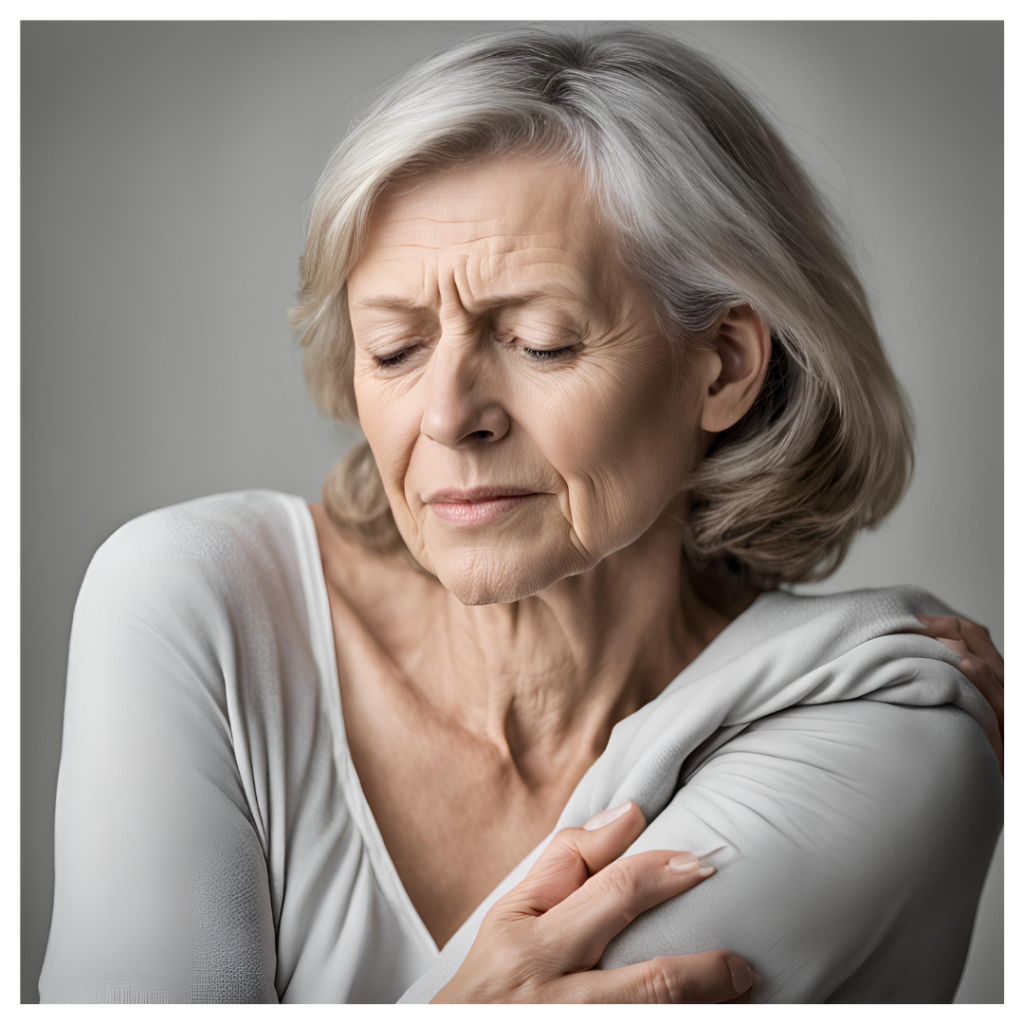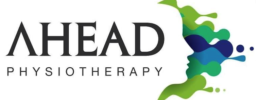But what exactly is the rotator cuff, and why are menopausal women more vulnerable to injury?
What Is the Rotator Cuff?
The rotator cuff is a group of four muscles and their tendons that surround the shoulder joint, helping to stabilize and enable a wide range of shoulder movements. These muscles are responsible for the flexibility and mobility of the shoulder, making them essential for everyday activities like reaching overhead, lifting objects, or even driving.

Why Are Menopausal Women More Susceptible to Rotator Cuff Injuries?
During menopause, women experience a decline in estrogen levels, a hormone crucial for maintaining bone density, muscle mass, and tendon strength. This hormonal change can weaken the connective tissues and increase the risk of injuries, including to the rotator cuff. Let’s break down the factors that make menopausal women more vulnerable to rotator cuff injuries:
1. Estrogen Decline and Joint Health
Estrogen helps regulate the balance between bone formation and resorption. As estrogen levels drop during menopause, bone density decreases, and the risk of osteopenia (low bone mass) and osteoporosis (a condition where bones become weak and brittle) increases. Weakened bones, in turn, can affect the muscles and tendons, making them more prone to strain and injury.
2. Muscle Weakness and Atrophy
In addition to its effects on bones, the drop in estrogen also contributes to muscle atrophy or weakening. As women age, muscle mass naturally decreases, and the shoulders may lose some of their stabilizing strength. This lack of muscle support around the rotator cuff puts additional strain on the tendons, increasing the likelihood of tears or strains.
3. Changes in Tendon Elasticity
The tendons in the rotator cuff can also lose some of their elasticity as a woman ages. This loss of flexibility, coupled with the hormonal changes during menopause, can lead to an increased risk of tendon injuries, such as tendinitis (inflammation) or rotator cuff tears.
4. Increased Risk of Impingement
Shoulder impingement occurs when the tendons of the rotator cuff become compressed within the shoulder joint. For menopausal women, this can be exacerbated by the decreased range of motion and the loss of muscle support around the shoulder, which leads to further irritation and potential injury.
Symptoms of Rotator Cuff Injuries
The symptoms of a rotator cuff injury can vary depending on the severity of the injury, but common signs include:
- Pain in the shoulder: Pain may be sharp or aching, particularly when lifting the arm, reaching overhead, or lying on the affected shoulder.
- Weakness: A noticeable reduction in the strength of the shoulder, making it difficult to lift objects or perform everyday activities.
- Limited range of motion: Difficulty in moving the shoulder in certain directions due to pain or stiffness.
- Clicking or popping sounds: A feeling of grinding or catching when moving the arm.
If these symptoms sound familiar, it’s essential to consult a healthcare professional for an accurate diagnosis and appropriate treatment.
Risk Factors
Several factors increase the risk of rotator cuff injuries in menopausal women, including:
- Age: The risk of rotator cuff injuries increases with age due to natural wear and tear.
- Hormonal Changes: Reduced estrogen levels during menopause make tendons more susceptible to injury.
- Previous Shoulder Injury: A history of shoulder injuries, even if mild, can make a woman more prone to further damage to the rotator cuff.
- Repetitive Movements: Jobs or activities that require repetitive overhead motions, such as lifting, throwing, or certain sports, increase the risk of injury.
- Sedentary Lifestyle: A lack of exercise can contribute to muscle weakness, making the rotator cuff more vulnerable.
Prevention and Management
While rotator cuff injuries can be common during menopause, there are several ways to reduce the risk and manage symptoms:
1. Strengthening Exercises
Maintaining strong muscles around the shoulder joint can help provide stability and reduce the risk of injury. Exercises that target the rotator cuff muscles and the surrounding shoulder muscles are essential. Physical therapy can provide a tailored program of strengthening and stretching exercises that improve shoulder function and flexibility.
2. Stretching and Mobility Work
Incorporating stretching and mobility exercises into your daily routine helps maintain flexibility in the shoulder joint. This can help prevent stiffness, which is a common issue in menopausal women.
3. Balanced Diet and Supplements
A healthy, balanced diet rich in calcium, vitamin D, and protein helps to maintain bone and muscle health. Some studies suggest that supplements like glucosamine and omega-3 fatty acids may support joint and tendon health. It’s essential to discuss these options with a healthcare provider before starting any supplementation.
4. Hormone Replacement Therapy (HRT)
Hormone Replacement Therapy (HRT) is sometimes prescribed to help alleviate menopausal symptoms. There’s evidence that HRT can help improve bone density and muscle mass, which might reduce the risk of rotator cuff injuries in some women. However, this treatment should always be discussed with a doctor, as there are potential risks involved.
5. Rest and Recovery
For those who have already suffered a rotator cuff injury, rest and proper recovery are key to healing. Overusing the shoulder before it has time to heal can worsen the injury. Ice therapy and anti-inflammatory medications can help reduce swelling and pain.
6. Ergonomic Adjustments
If your job or daily activities involve repetitive overhead motions, consider making ergonomic adjustments. Using assistive devices or altering the way you perform certain tasks can help reduce strain on the shoulder and protect the rotator cuff.
Treatment Options
If a rotator cuff injury is diagnosed, treatment will depend on the severity of the injury. Options include:
- Physical Therapy: A physiotherapist can design a rehabilitation program focused on restoring range of motion, strength, and flexibility.
- Medications: Nonsteroidal anti-inflammatory drugs (NSAIDs) can help manage pain and inflammation.
- Steroid Injections: In more severe cases, corticosteroid injections may be recommended to reduce inflammation and pain.
- Surgery: For full rotator cuff tears or cases that don’t improve with conservative treatment, surgery may be necessary. This can range from minimally invasive arthroscopic surgery to a more complex repair.
Conclusion
Rotator cuff injuries are a significant concern for menopausal women, given the physical changes that occur during this time. However, with a proactive approach that includes strengthening exercises, stretching, a balanced diet, and appropriate medical care, women can reduce their risk of these injuries and manage symptoms effectively. If you experience any signs of a rotator cuff injury, don’t hesitate to reach out to a Physiotherapist to discuss your symptoms and treatment options. Staying informed and taking care of your musculoskeletal health during menopause can help ensure that you continue to live an active, fulfilling life.
